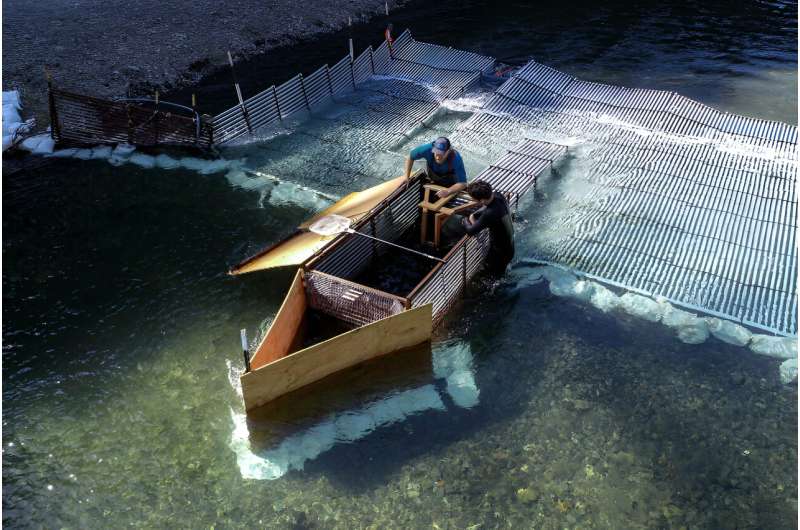This article has been reviewed according to Science X's editorial process and policies. Editors have highlighted the following attributes while ensuring the content's credibility:
fact-checked
peer-reviewed publication
trusted source
proofread
Planning for climate resilience in California's freshwater ecosystems

California's unique geomorphology and Mediterranean-type climate have largely shaped the state's freshwater lakes, streams, rivers, and wetlands. Now, however, freshwater ecosystems are stressed by water diversion, land use changes, non-native species, sedimentation, and nutrient loading, which are compounded by increases in water temperatures and changes in snowmelt and runoff patterns driven by anthropogenic climate change.
A new perspective published in the Proceedings of the National Academy of Sciences calls on California leaders to do more to recover degraded freshwater ecosystems and protect the resilience, health, and viability of existing ecosystems.
The analysis emphasizes the urgent need for a deeper understanding of how climate and non-climate stressors affect vital ecosystem processes governing their hydrology and the ecology of organisms that depend on them.
The paper was co-authored by University of California, Berkeley professors Mary Power and William Dietrich; Peter Gleick, Ph.D. Energy and Resources; and University of Nevada, Reno professor Sudeep Chandra.
The authors present several case studies that highlight the complex interactions of these stressors and their impact on the food webs within freshwater ecosystems. They point out the difficulty that researchers and water managers face in developing models capable of predicting change within these complex systems. They also offer examples of successful strategies, like an experimental weir built on the south fork of the Eel River.
The weir was built through a partnership that includes Gabe Rossi (Ph.D. Integrative Biology) and Phil Georgakakos (Ph.D. Integrative Biology), researchers in the lab of Cooperative Extension professor Ted Grantham; Darren Mierau, North Coast regional director for CalTrout; the Wiyot tribe; and Stillwater Sciences.
Georgakakos discovered that pikeminnow, an invasive species in the Eel River, leave their downriver overwintering habitat for upstream foraging areas in late spring when the river conditions pass a certain threshold. That upstream migration increases their overlap with rearing juveniles of the native salmonid species that they prey on.
Georgakakos' findings helped inform a model used to predict how the river warms and streamflow slows, which could better inform water management during summer low-flow periods, leading to decreased predation and resource competition.
Since its installation, the weir has helped manage the pikeminnow population and has been successful in reducing pikeminnow arrivals in upstream juvenile salmonid-rearing habitats.
More information: Mary E. Power et al, Anticipating responses to climate change and planning for resilience in California's freshwater ecosystems, Proceedings of the National Academy of Sciences (2024). DOI: 10.1073/pnas.2310075121
Journal information: Proceedings of the National Academy of Sciences
Provided by University of California - Berkeley




















